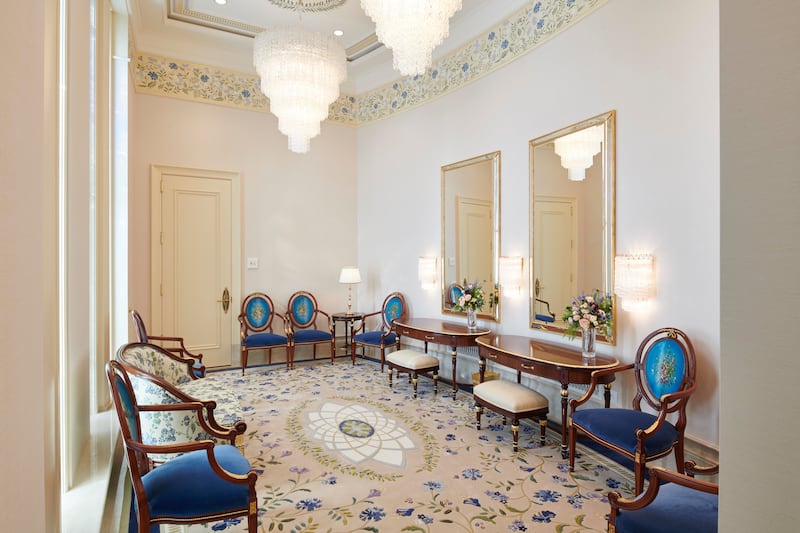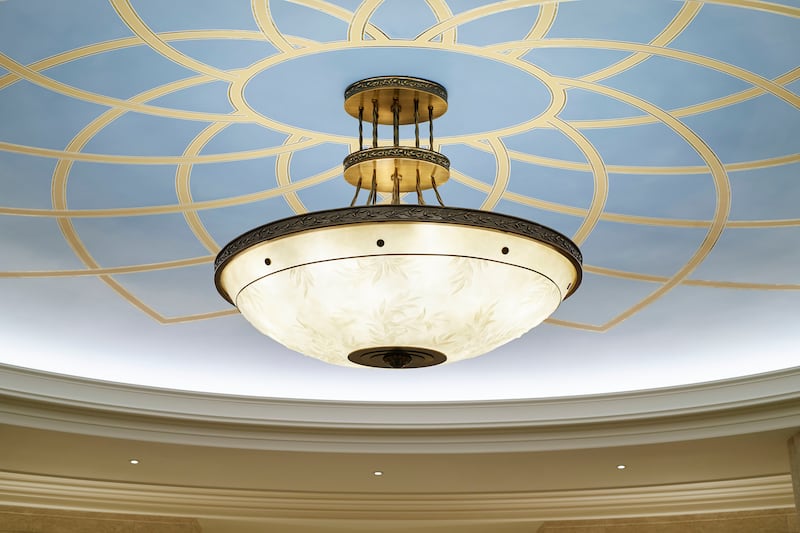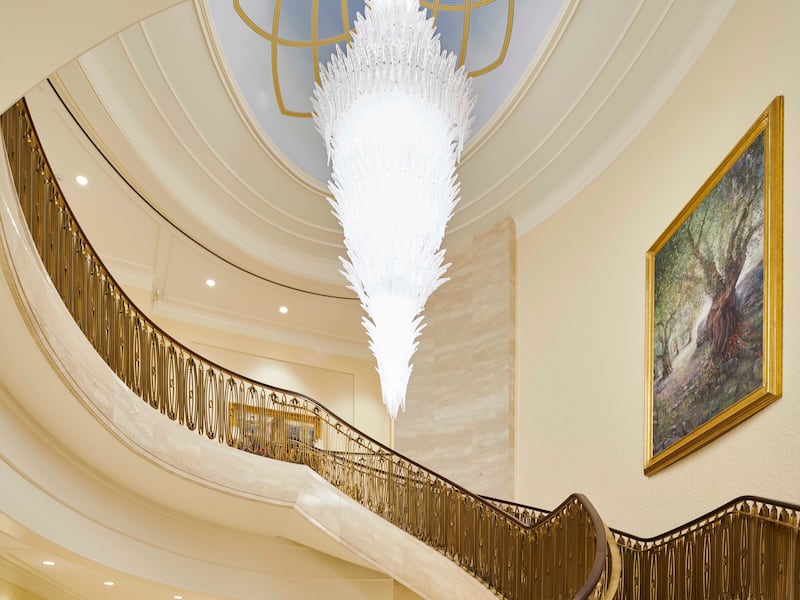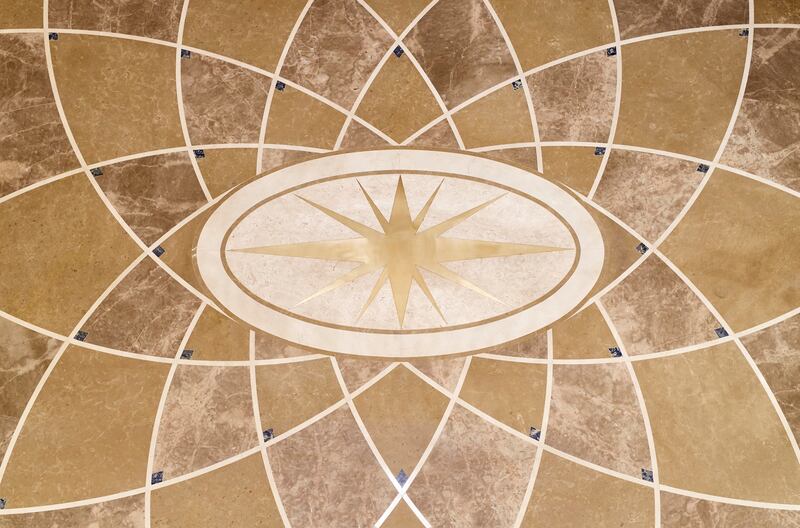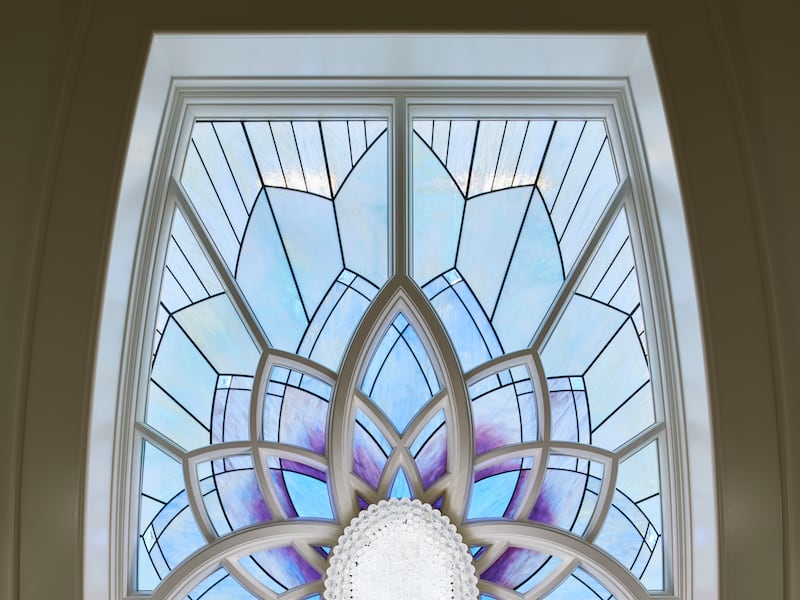ROME — The first Italians to tour the new Rome Italy Temple stopped just inside the front door Monday and began to point and smile at something familiar, even though none had ever been inside a temple of The Church of Jesus Christ of Latter-day Saints before.
There in a rug in the foyer — and soon they found it throughout the temple in stained glass, in staircase railings and engraved in the floors and walls — was a unique oval motif created by Michelangelo nearly 500 years ago and familiar to most Romans today, one with added symbolism in a Latter-day Saint temple.
"This is from city hall, right?" local Italian politicians and journalists asked excitedly.
"It's very Roman," said Elder Massimo De Feo, an Italian and a General Authority Seventy of the church. "They were smiling because they recognized something that they they could connect to immediately."
The design has meaning beyond the architect's desire to tie the temple to Rome's history, art and architecture.
"I think it's a very nice gesture and gift to the city of Rome to place that symbol in the temple," said Marcello De Vito, president of the Rome City Council. "We are honored to have them bring that symbol into the temple. During the tour of the temple, we learned the oval is a symbol of eternity in your religion. The temple combines this symbol of your religion with a symbol of the city of Rome."
In the 16th century, Pope Paul III commissioned Michelangelo to redesign Capitoline Hill, one of the Seven Hills of Rome. Anciently, the hill was dedicated to the god Saturn. Later, it was the site of the temple of Jupiter. By the 1530s, it was in disrepair. The pope hoped the artist could recapture Rome's glory.
Michelangelo designed three new buildings, including one used today as Rome's city hall. The other two now are famous as the Capitoline museums. The sculptor's plans called for a plaza in the center of the buildings decorated with a paved oval surrounding an interlaced 12-point star. All who visit the hill remember the unique Piazza del Campidoglio.
Circles and ovals in Latter-day Saint temples evoke eternity because they have no beginning or end, Elder David A. Bednar and Elder Ronald A. Rasband of the Quorum of the Twelve Apostles said during Monday's tours of the temple and in a news conference afterward.
"Now (we) have the symbol of eternity in the oval or the ellipse in the Eternal City," Elder Bednar said. "That seems like a very nice alignment to me."
Giovanni Claudo, president of the Third Roman Municipality, said the church's decision to reimagine the Roman symbol for the temple was itself a symbol of its effort to connect the temple to the community.
It appeared to work.
"When they saw it in the temple they immediately connected to it, because as Romans they immediately felt this is something that we know," Elder De Feo said. "That was a door opening to them as I explained the significance and the meaning. When they saw that we give value to and honor local authors, and we portrayed Michelangelo, for example, who is the greatest sculptor, they were very proud and they got excited."

